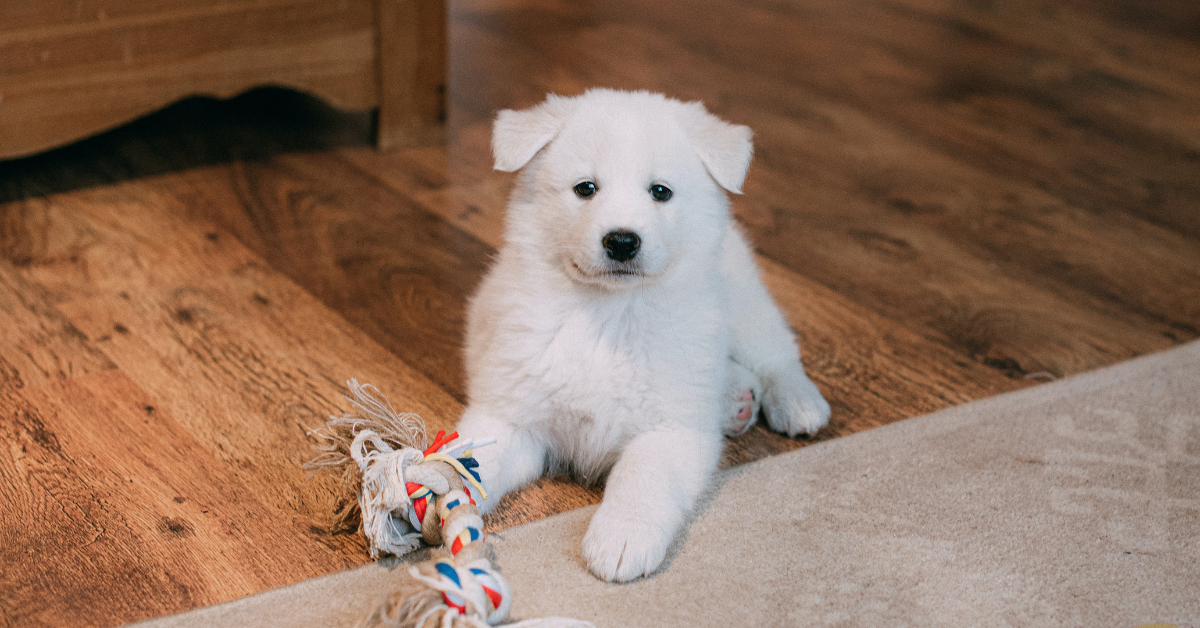
Introducing a New Pet Into Your Home
Bringing a new pet into your home can bring so much joy into your life. But, these transitions don’t always go smoothly. While we envision the newest member of the family immediately hitting it off with the rest of the household, this doesn’t always happen. Take care when introducing a new pet to your home’s other residents — both human and non-human — to ensure everyone’s safety and establish good relationships.
Create a pet introduction plan, based on your pets
Introducing a pet to his new family is a one-step-at-a-time process; be patient, and never leave two pets together unsupervised until you are absolutely certain that they will be safe and comfortable together. Every situation will be different. When preparing for a new pet, learn everything you can about him and his past experiences to understand how he may interact with the other animals and people in your home. Is he a young puppy or kitten, or is he an adult? Has he interacted with dogs, cats, human children, or with other creatures he may encounter in your home, or will these be completely new to him? What size is he, especially in comparison with your other animals? What is his personality like? Is he energetic, playful, mellow? Consider all your current household residents, and the newest one, when planning for the introductions. Make your plan specific to your household, and enlist the help of an animal behavior specialist if needed.
Introduce pets to each other’s scents first
Pets can learn a lot about each other through scents. To get pets accustomed to each other, and prepare for a smooth first meeting, first expose them to each other’s smells. For example, before introducing them, give them each a toy or blanket that belongs to the other. Or, try keeping your new cat in a separate room in your house for the first few days, with his food bowl next to the closed door, and your resident dog’s food bowl on the opposite side. They will be able to smell each other under the door, and develop positive associations with the other animal’s smell (due to the food). If this is comfortable, replace the closed door with a gate so that they can see each other. Let the new pet sniff around and explore his new home without interference from the other pets.
Understand body language
When your new pet meets your resident pets, watch each animal carefully to understand his reaction, and be prepared to jump in before things escalate. A tail tucked between the legs indicates fear or submission, for example. Anger is communicated by flattened ears and arched backs in cats, and bared teeth and fur standing up on end in dogs. Ideally, when your pets meet each other, they remain calm and show relaxed curiosity, a good sign of compatibility and potential friendship. Praise and reward your animal companions for calm behavior.
Carry out a controlled meeting in a safe environment
When introducing a new dog to other dogs, have the first meeting at a park or other “neutral” territory. Have a helper handle the new dog so that they can easily be pulled apart if needed, and let them sniff each other. Walk them together before heading home. If introducing a cat to a dog, first make sure that the cat has perches out of the dog’s reach to escape if he feels endangered. Exercise the dog beforehand to release energy, and keep him on leash during the meeting. If the cat retreats, let him do so. Give the pets breaks from each other and the stress of new situations, and repeat the short meetings when they are relaxed. When introducing two cats, keep in mind that cats are very territorial. Make sure they each have a separate litter box and food and water dishes. If introducing a dog or cat to a smaller animal, such as a bird or rodent, be especially vigilant — cats and dogs might instinctively see small animals as prey.
Give lots of love to all your pets
To keep jealousies from forming, and to make the new household situation as positive as possible, give all your pets, new and old, plenty of playtime and attention. During first meetings, you may want to put your pet’s toys away in case either pet is very possessive. On the other hand, if they can share well, playing with toys may be a great way to help new furry companions bond. You know your pets best, so do what you think is best. As your pets get used to the new arrangement, give them each a lot of extra attention and praise so that they feel good about the changes, rather than stressed.
Be careful introducing pets to small children
Babies and small children should always be supervised around pets. Kids almost always mean well, but can be a little too rough with pets at times, causing them to snap. Explain to children how to gently handle and care for pets — including not sharing human food with them and not bothering them while pets are eating. Additionally, pets pose risks of parasitic infections to children, so be especially careful with outdoor play and cleanliness.
Hopefully, your new furry friend does become comfortable in your home, and develop friendships with the rest of your family. If, however, you cannot make it work out, if no matter what you do, your pets display aggressive behavior towards each other, do not endanger your pets. It may be hard to do, but if there is no way that your new pet can live with you safely, then it will be better to rehome him. For help with introducing animals to each other, please reach out to your vet.
Best of luck with your new pet. Wishing you and all your beloved animals wonderful relationships and lots of good years to come!






